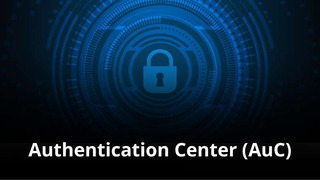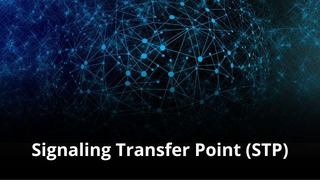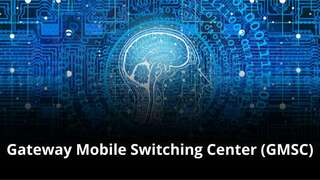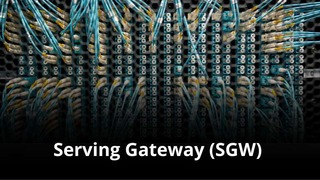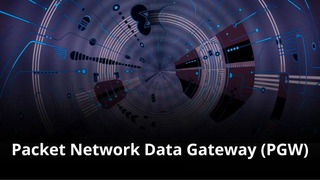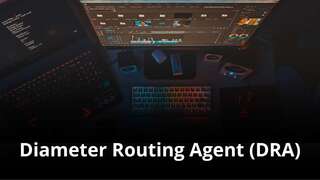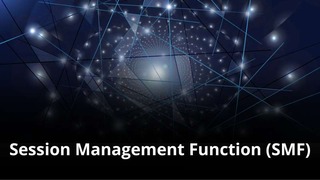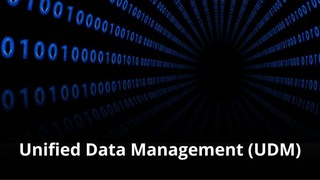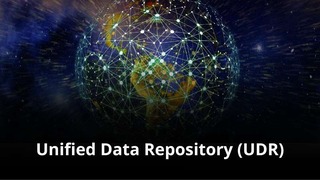Introduction about the Diameter Routing Agent (DRA)
The Diameter Routing Agent (DRA) is a critical and foundational routing component within the architecture of 4G (LTE) and 5G core networks. Understanding its purpose is essential for comprehending how modern mobile systems efficiently managed the Diameter signaling traffic between all other core network elements. This point acts as the central proxy agent and router for all Diameter signaling messages, ensuring that crucial information for mobility management, authentication, policy enforcement, and charging is rapidly and reliably routed between network nodes. You will find it crucial for any operator aiming to maintain the stability, scalability, and security of its core control plane.
What are the details of an Diameter Routing Agent (DRA)?
- History and Evolution of the Diameter Router Agent
- Core Utility and Functionality of the DRA
- Technical Integration and Data Model
- DRA Ownership for MVNOs and IoT Companies
- Organizational Impact of DRA Ownership?
- Redundancy and High Availability
- Impact of 4G, 5G, and 6G on the DRA
- Frequently Asked Questions about the DRA
- Summary
History and Evolution of the Diameter Routing Agent
The concept of a dedicated signaling router evolved with the migration from the SS7 protocol to the Diameter protocol during the transition to 4G. This transition introduced the Diameter Routing Agent (DRA) as the logical successor to the legacy Signaling Transfer Point (STP). The DRA’s original design focused predominantly on the essential task of routing Diameter messages based on complex rules, including the subscriber’s identity (IMSI) and the message type (Application ID). This reflected the main requirement for managing a fully packet-switched, IP-based core network. As networks evolved into the 5G Service-Based Architecture (SBA), the DRA’s control plane routing function was further enhanced and, in many cases, converged with other routing elements like the Service Communication Proxy (SCP), which handles HTTP/2-based routing. Its architecture, however, remains geared towards providing the core routing intelligence for the control plane. The evolution is:
Functional Entities
Central Message Router for circuit-switched voice and data control (MAP).
Central Proxy Agent/Router for packet-switched data control.
Central Hub for Network Function discovery, load bal. & routing of cloud-native microservices communication.
Core Utility and Functionality of the DRA
What is the DRA Used For?
The Diameter Routing Agent (DRA) is the definitive routing hub for all Diameter signaling messages within a 4G/5G mobile network’s control plane. Its primary purpose is to act as an intelligent proxy and load balancer for the Diameter network. It manages the routing of all signaling data exchanged between core elements like the HSS/UDM, PCRF/PCF, MME/AMF, and OCS. It is crucial for ensuring that requests for policy, authentication, and charging information reach their intended destination swiftly and accurately, particularly in environments with multiple nodes (e.g., multiple HSS or OCS entities). Deploying a DRA is necessary to decouple signaling entities, reduce the complexity of inter-node connections, and provide critical redundancy and security to the entire core.
Key Functions of the Diameter Routing Agent
Lets investigate the core functions of the Diameter Routing Agent (DR) to understand its critical role in modern network operations:
- Message Routing: It routes Diameter signaling messages (e.g., Auth/Auth-Answer) between the requesting and destination nodes based on Diameter Application IDs and routing logic.
- Binding/Session Persistence: The DRA ensures that all subsequent messages related to an active session (e.g., a data call) are routed back to the same specific destination node that originated the session
- Load Balancing: It distributes Diameter message traffic evenly across multiple destination nodes (e.g., a cluster of HSS or OCS) to prevent overloads and ensure high availability.
- Topology Hiding: The DRA hides the internal topology of the network from external partners (e.g., roaming partners), centralizing the entry and exit points.
- Proxy Agent: The DRA terminates and re-originates the Diameter connection, allowing it to perform message modification, logging, and application-level routing decisions.
- Congestion Control: It can implement mechanisms to detect and mitigate signaling storms or congestion caused by excessive message volumes.
- Inter-network Routing: It provides the controlled interface point for exchanging Diameter signaling with roaming partners’ network elements.
- Protocol Interworking: Advanced DRAs can perform signaling interworking, translating between legacy SS7/MAP (via an interworking function) and modern Diameter.
- Mediation & Logging: It serves as a central point for logging and auditing control plane transactions, aiding troubleshooting and security analysis.
Technical Integration and Data Model
Integration with Other Systems
The Diameter Routing Agent (DRA) does not operate in isolation; it is a centrally connected network element on the IP network. Examine its key integration points to appreciate its centrality in 4G/5G systems. It connects primarily to every major Diameter signaling entity: the HSS/UDM (Subscriber Database), PCRF/PCF (Policy Control), OCS (Online Charging), MME/AMF (Mobility Management), and PGW/SMF (Gateway/Session Management). It is also the gateway for Diameter signaling with other mobile operators’ networks for roaming purposes. All Diameter signaling between these entities typically passes through the DRA.

Technical Data Model and Key Interfaces
The Diameter Routing Agent (DRA) employs a structured Routing Data Model. This model dictates how routing tables, session state, and load balancing algorithms are efficiently organized and stored, facilitating millisecond-level message routing. Key interfaces utilized by the DRA are fundamentally based on the Diameter protocol over Transmission Control Protocol TCP or Stream Control Transmission Protocol SCTP. Specific interfaces utilized include:
- Internal Diameter Interfaces: It connects to all internal network nodes (HSS, PCRF, OCS) using IP-based interfaces that carry the Diameter Base Protocol and its applications (e.g., Cx, Sh, Rx, Gy, Gx).
- Routing Tables: These internal tables store the complex logic necessary to route messages based on the Realm, Application ID, and Origin/Destination Host defined in the Diameter messages.
- Session Binding Tables: These tables store temporary session state data to ensure that related messages are always routed back to the correct originating server (e.g., the specific HSS that holds the subscriber record).
DRA Ownership for MVNOs and IoT Companies
Why Own a DRA?
For a Full MVNO or an IoT company, owning a dedicated Diameter Routing Agent (DRA) is often essential for operational independence and specialized service delivery. Consider that this node is the fundamental system that controls the flow of control plane information. Owning it allows these companies to decouple their internal HSS, OCS, and PCRF systems, making each of them scalable and redundant without affecting the others. Furthermore, it provides a single point to enforce policy and charging routing rules and to perform inter-network routing for roaming, bypassing the host MNO’s control plane signaling for those critical functions.
Advantages and Disadvantages of DRA Ownership
Complete Control over all Diameter signaling logic and flow.
Simplified Internal Architecture by decoupling HSS, OCS, and PCRF clusters.
Centralized Policy Enforcement and routing for custom IoT/data plans.
Enhanced Security via centralized topology hiding and message screening.
Scalability and load balancing for high-volume policy and charging requests.
High Initial Investment in highly specialized, high-performance hardware.
Operational Complexity requiring expertise in Diameter protocol and IP routing.
Maintenance and Upgrade Costs for a mission-critical, high-traffic system.
Interworking Challenges when needing to integrate with legacy SS7 networks.
Requires deep integration expertise with all other core network elements.
Organizational Impact of DRAOwnership
Analyzing the impact of integrating a DRA (Diameter Routing Agetn):
Operational Impact: Requires DevOps teams with expertise in Diameter protocol signaling and policy-based routing logic. Operational procedures must be automated for configuring and updating routing tables based on the introduction of new network functions (NFs) or peering agreements. The team must monitor signaling latency continuously, as the DRA is in the critical path for every session and policy update.
Financial Impact: Involves CapEx and OpEx related to high-performance signaling software licenses and the underlying infrastructure. The primary financial benefit is operational efficiency; the DRA reduces signaling storms, manages traffic peaks efficiently, and eliminates the need for complex, direct point-to-point connections between every pair of NFs, leading to lower overall integration costs.
Security Impact: The DRA handles sensitive signaling messages that contain subscriber identity and session data. Robust security is required to prevent signaling attacks (DoS or eavesdropping). It must enforce strong Diameter peer authentication and protocol integrity to ensure signaling messages are routed only to trusted, authenticated network elements.
Technical Impact: The DRA must be deployed as a highly reliable, low-latency, and horizontally scalable network function. It must be integrated as the central hub for all Diameter-based interfaces (e.g., S6a, Gx, Rx) to maintain a consistent view of the network topology and efficiently load-balance traffic across multiple instances of the HSS or PCRF.
Redundancy and High Availability

The Diameter Routing Agent (DRA) is a critical dependency for almost every control plane transaction (authentication, data session setup, charging update); therefore, Redundancy and High Availability (HA) are absolutely critical requirements. Implement a fully redundant system architecture, which is achieved through deploying clustered, active-active DRAs with load balancing. This design ensures that if one DRA fails, its partner can immediately take over the signaling load without dropping control plane transactions. Methods like geo-redundancy are standard practice due to the catastrophic consequences of a complete control plane failure. The system must also employ rigorous session state synchronization mechanisms. These mechanisms guarantee that active sessions (bindings) are immediately mirrored across all DRA instances, allowing seamless failover and preventing any message loss or incorrect routing.
Impact of 5G, and 6G on the DRA
DRA’s Transition
The Diameter Routing Agent (DRA) is a native component of the 4G/LTE Evolved Packet Core (EPC). Its function continues into the 5G core, where the Diameter protocol remains in use for backwards compatibility and for specific interfaces (e.g., interfaces to the OCS and PCRF). However, the native 5G control plane adopts the Service-Based Architecture (SBA) using HTTP/2 for communication.
5G and 6G Architecture
In the 5G core, the functionality of the DRA is largely assumed by the Service Communication Proxy (SCP). The SCP performs the same logical function as the DRA—centralized routing, load balancing, topology hiding, and security—but tailored for the HTTP/2 API-based communication between 5G Network Functions (NFs) like the AMF, SMF, PCF, and UDM. The concept will further evolve in 6G toward an even more abstracted, cloud-native control plane based on advanced routing and service mesh technologies. However, the fundamental role of centrally routing, balancing, and securing control plane messages—the core function of the DRA—remains essential for all modern mobile network architectures.
Frequently Asked Questions about the Diameter Routing Agent (DRA)
1. What is the main function of the DRA?
The primary function of the DRA is to act as an intelligent proxy to route, load balance, and secure Diameter signaling messages between 4G/5G core network elements.
2. Why is the DRA needed in a 4G network?
It decouples nodes (e.g., HSS from MME), simplifies connectivity, routes messages based on advanced criteria (like IMSI), and ensures sessions persist to the correct server.
3. What is the relationship between the DRA and the STP?
The DRA is the Diameter equivalent of the STP (Signaling Transfer Point), which routes SS7 signaling. They perform the same logical control plane routing role.
4. What protocols does the DRA route?
The DRA routes messages based on the Diameter Base Protocol, which runs over TCP or SCTP.
5. What is the 5G equivalent of the DRA?
The DRA’s functionality is largely taken over by the Service Communication Proxy (SCP), which routes HTTP/2-based messages in the 5G Service-Based Architecture.
Summary
The Diameter Routing Agent (DRA) is the central, authoritative routing hub that controls all Diameter signaling traffic in 4G (LTE) and 5G mobile core networks. For a Full MVNO, acquiring and operating a DRA (or its 5G equivalent, the SCP) is essential because it enables the decoupling and independent scaling of all key control plane systems (HSS, OCS, PCRF). This grants the MVNO full control over policy enforcement, charging control, and roaming signaling. This decision involves substantial capital expenditure and requires specialized Diameter protocol and IP networking expertise. While the DRA’s role evolves into the SCP in native 5G, its conceptual function—that of the master control plane router—is fundamental to all generations of modern mobile communication.
